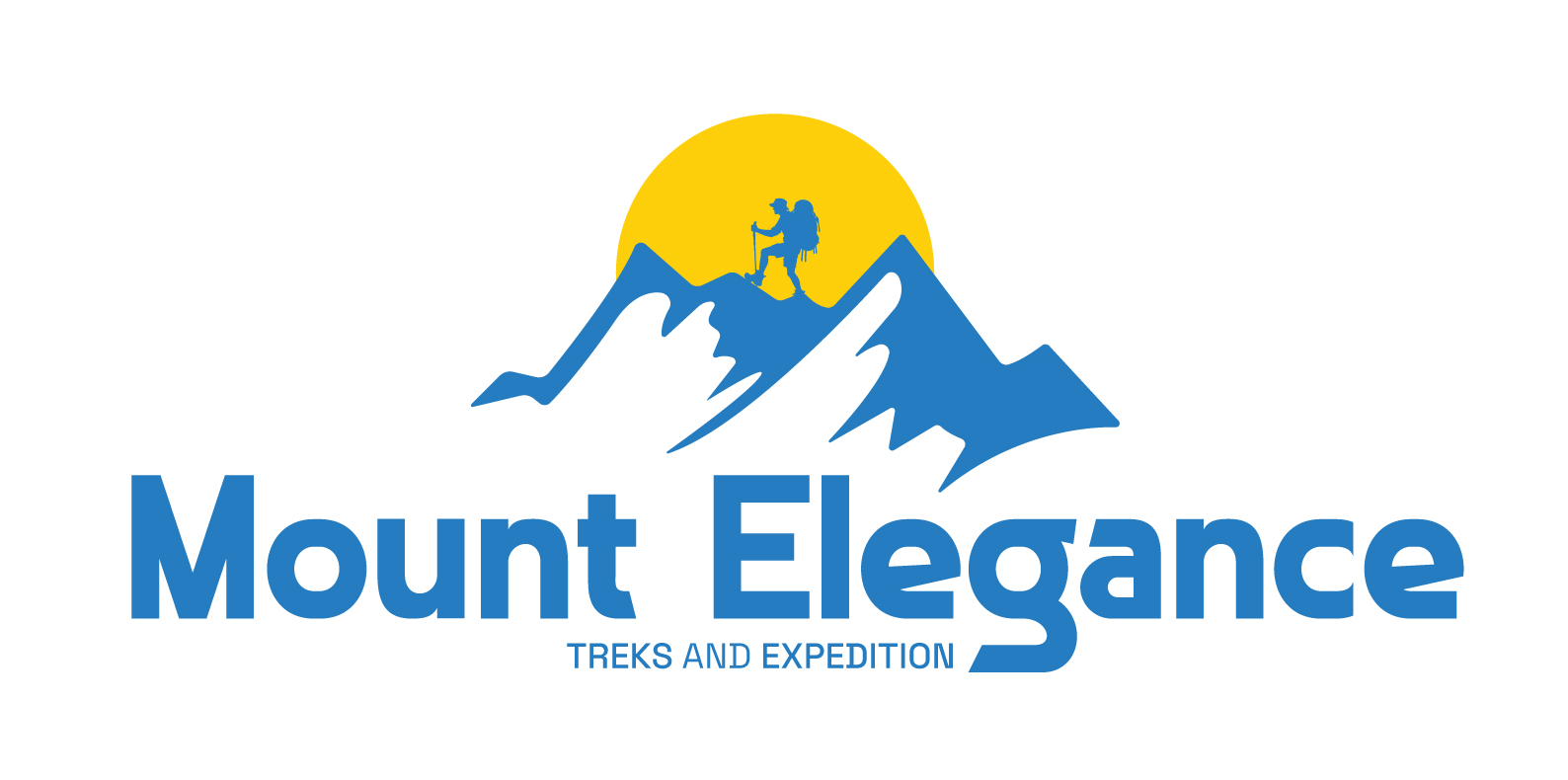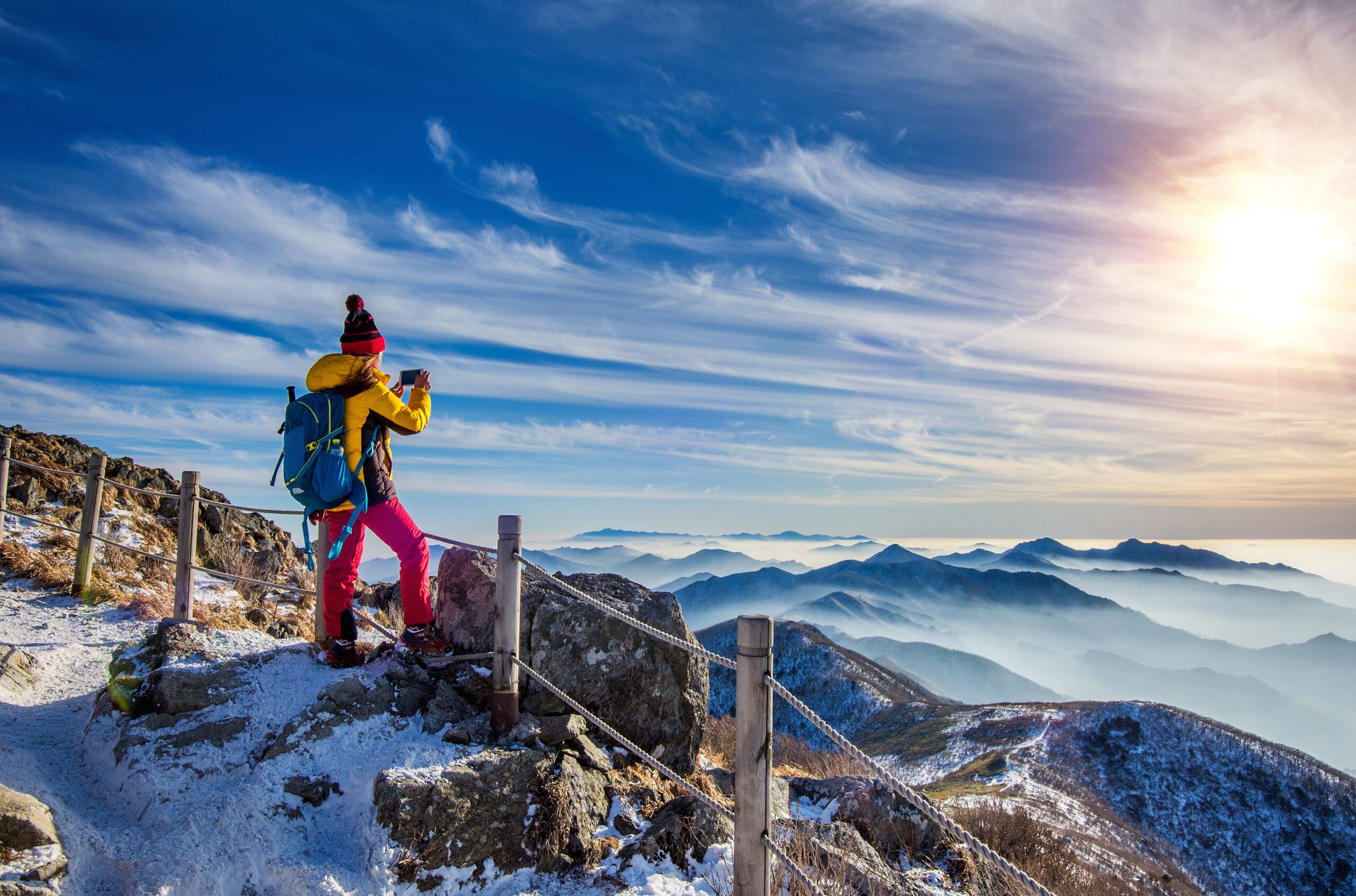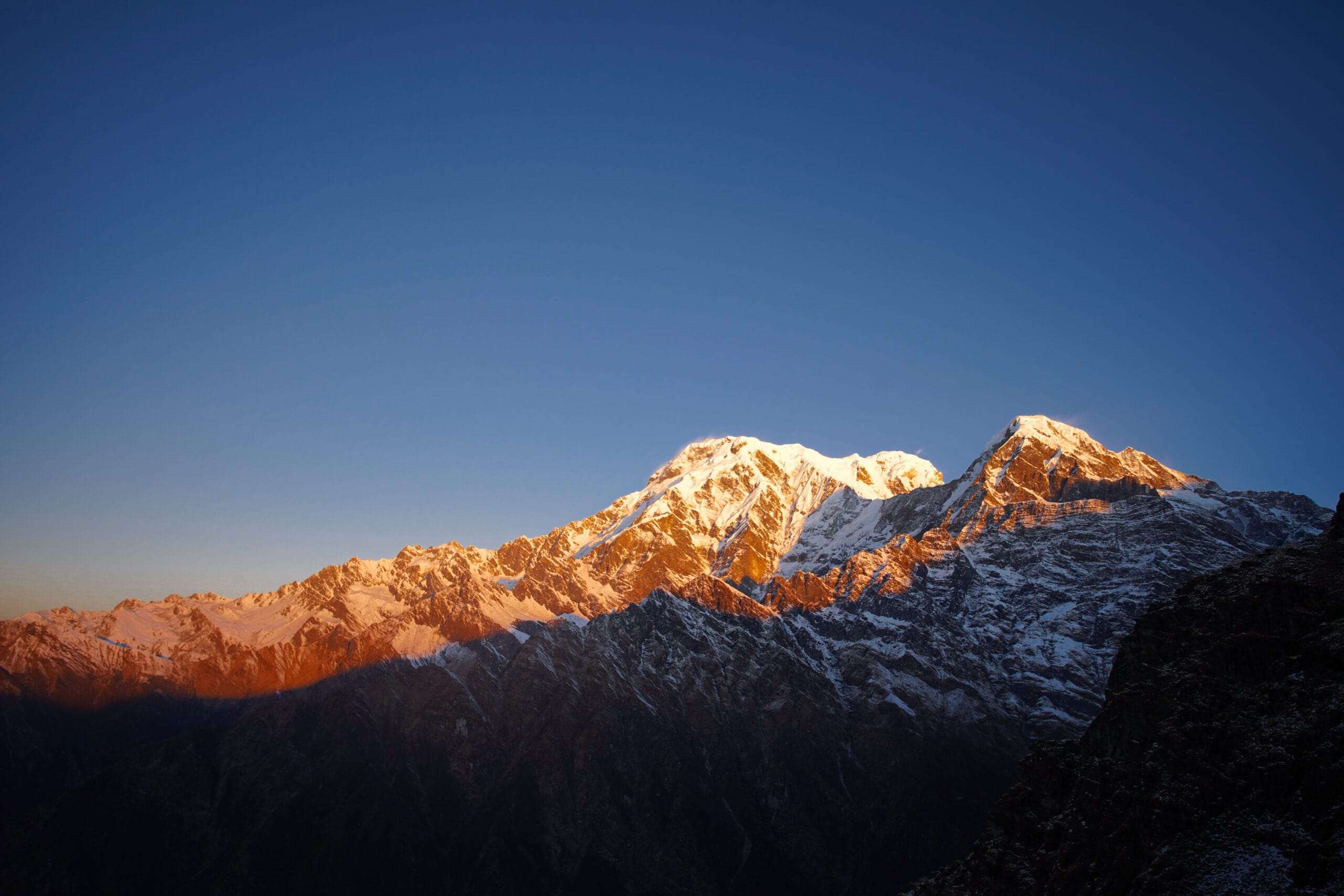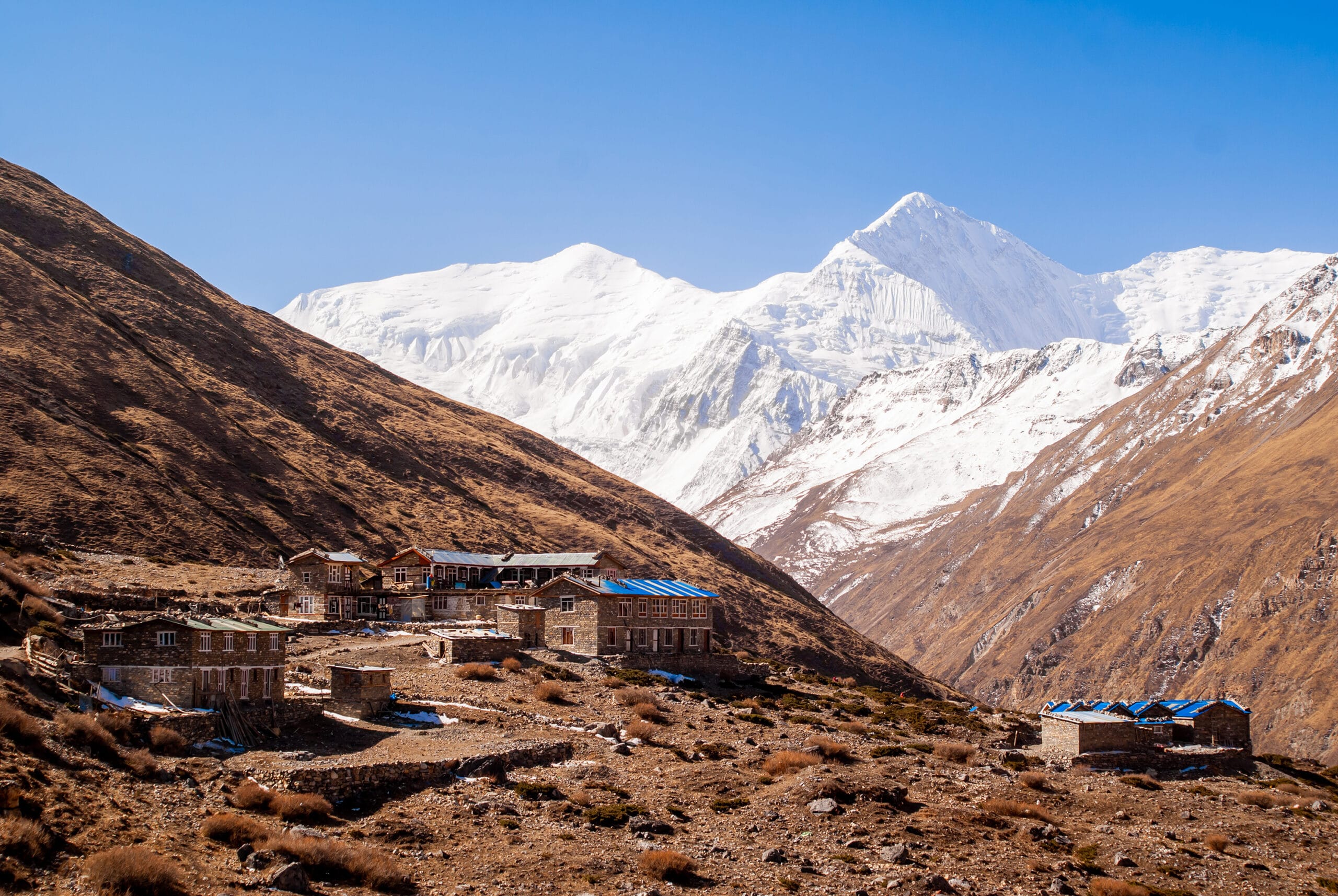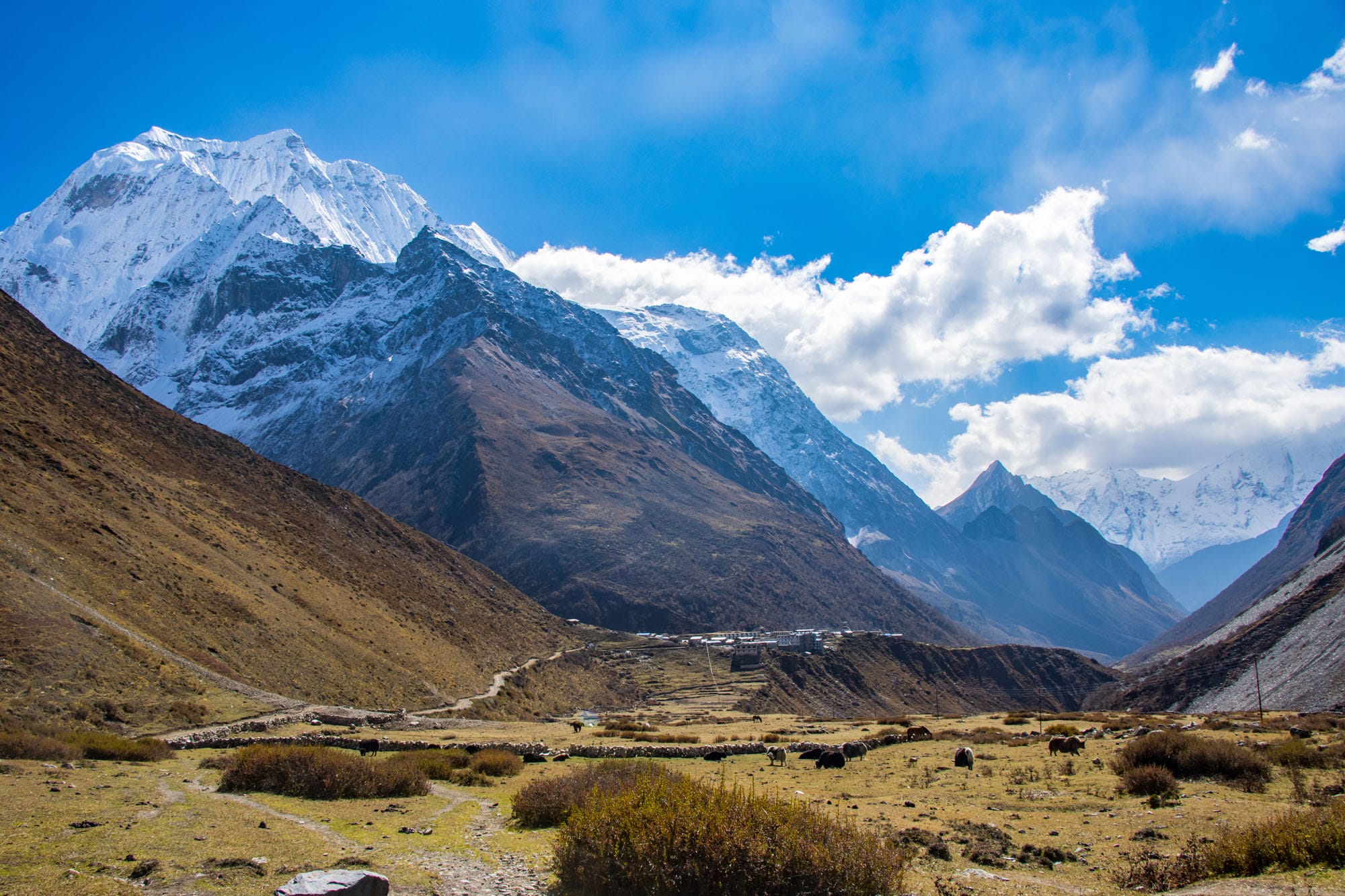Ghorepani PoonHill Trek- 8D
Best Season
Highest Altitude
Trip Overview
The Ghorepani PoonHill Trek is a delightful journey into the Annapurna region, offering a perfect blend of natural beauty, cultural richness, and panoramic mountain views. The 8-day Ghorepani PoonHill trek is one of the most popular and accessible treks in Nepal, making it an excellent choice for trekkers of all levels, including beginners and families. Eventually, trek takes you through charming Gurung and Magar villages, and lush rhododendron forests. The breathtaking views of some of the peaks like Annapurna South, Machapuchare (Fishtail), and Dhaulagiri is the highlight of this adventure.
Adventure of Pokhara
Ghorepani PoonHill trek adventure begins from the capital city of Kathmandu. From there, a scenic drive to Pokhara. Pokhara is known for its serene lakes and stunning mountain backdrop. From Pokhara, a short drive takes you to the starting point of the trek at Nayapul. The trail winds through picturesque villages like Tikhedhunga and Ulleri, where you can experience the warm hospitality of the local people and gain insight into their traditional way of life. As you ascend, the rhododendron forests come alive, especially in the spring when the blossoms create a vibrant tapestry of colors.
Journey to PoonHill
The highlight of the trek is the early morning hike to Poon Hill, situated at an altitude of 3,210 meters. Initially , vantage point offers one of the most spectacular sunrise views in the Himalayas. As the sun rises, the snow-capped peaks of the Annapurna and Dhaulagiri ranges are bathed in a golden glow. The panoramic view from Poon Hill is often described as one of the best in the world.
Cultural Exploration
As you continue this trek to the stunning scenery, the Ghorepani Poon Hill Trek also offers a rich cultural experience. Furthermore, you’ll have the opportunity to interact with the Gurung and Magar people, visit traditional mountain villages. Ultimately, the trek concludes with a descent through the beautiful village of Ghandruk, known for its stone houses, narrow alleyways, and rich cultural heritage.
This trek is not just about reaching a destination; it’s about enjoying every step of the journey, from the vibrant landscapes to the cultural encounters. The journey is perfect for those who want to experience the beauty of the Himalayas in a relatively short period. Additionally , it’s combination of stunning mountain vistas, rich cultural experiences, and accessible trails.
Trip Highlights:
- Poon Hill Sunrise: Witness the spectacular sunrise over the Annapurna and Dhaulagiri ranges from Poon Hill (3,210m).
- Charming Villages: Trek through traditional Gurung and Magar villages, experiencing their rich culture and hospitality.
- Rhododendron Forests: Walk through lush rhododendron forests that are in full bloom in spring.
- Pokhara: Enjoy the serene beauty of Pokhara, with its beautiful lakes and mountain views.
- Accommodation: Stay in comfortable teahouses during the trek; standard hotels in Kathmandu.
- Meals: Full-board meals (breakfast, lunch, and dinner) during the trek; breakfast in Kathmandu.
- Luggage: Porters provided for luggage transport (up to 15 kg per person).
- Internet/WiFi, Electricity, and Water: Available at most lodges along the trekking route (additional charges may apply); complimentary WiFi in Kathmandu hotels.
Essential Items:
- Base Layers: Thermal top and bottom
- Insulation: Fleece jacket and down jacket
- Outer Layer: Waterproof jacket and pants
- Trekking Clothes: Some pairs of trekking pants, quick-dry shirts
- Footwear: Trekking boots, camp shoes/sandals
- Headwear: Sun hat, warm hat, neck gaiter
- Hand-wear: Lightweight gloves, insulated gloves
Accessories: Sunglasses, sunscreen, lip balm , headlamp with extra batteries , trekking poles ,50-60L backpack + daypack
Personal Items: Hygiene essentials (toothbrush, toothpaste, wet wipes), Quick-dry towel ,Water bottle or hydration system (2L capacity) ,Snacks (energy bars, nuts)
Medical Kit: Personal medications, basic first aid, altitude sickness pills
Documents: Passport, trekking permits, travel insurance
Optional: Camera, power bank, Lightweight sleeping bag
Itinerary
- Drive Duration: 30-45 minutes
- Meal: Breakfast
- Highest Altitude: Kathmandu (1,400m/ 4,600ft)
Your adventure begins with your arrival at Tribhuvan International Airport (TIA), Kathmandu, where you will be warmly welcomed by your trekking guide or a representative. As you step out of the airport, the sights, sounds, and energy of Nepal’s vibrant capital will immediately immerse you in a new world. You will be transferred to your hotel in Thamel, the lively tourist hub known for its trekking shops, restaurants, and historical sites.
After checking in, you can spend the rest of the day exploring Kathmandu. You might visit Kathmandu Durbar Square, Swayambhunath (Monkey Temple), Pashupatinath Temple, or Boudhanath Stupa, all of which showcase Nepal’s rich heritage and religious significance. In the evening, you will attend a pre-trek briefing, where your guide will explain the itinerary, safety guidelines, permits (TIMS & Annapurna Conservation Area Permit), and essential gear. You can then enjoy a traditional Nepali welcome dinner, introducing you to the country’s flavors before the trek begins.
- Drive Distance: 200 km (124 miles)
- Drive Duration: 7-8 hours
- Meal: Breakfast
- Highest Altitude: Pokhara (822m/ 2,697ft)
Early in the morning, you will embark on a scenic drive from Kathmandu to Pokhara along the Prithvi Highway, which winds through lush green hills, terraced fields, and charming villages. The drive follows the Trishuli River, a popular white-water rafting destination, and offers glimpses of rural Nepali life.
Pokhara, Nepal’s adventure capital, welcomes you with its breathtaking views of the Annapurna and Dhaulagiri ranges, along with the serene Phewa Lake. After checking into your hotel, you can explore Lakeside Pokhara, visit Davis Falls, Gupteshwor Cave, or the World Peace Pagoda, or simply relax at a lakeside café while enjoying the tranquil atmosphere. This night will be your final one in urban comfort before the trek begins.
- Drive Distance/ Trek Distance: 42 km (26 miles). / 8km (5 miles)
- Drive Duration/ Trek Duration: 1.5-2 hours. / 4-5 hours
- Meal: Breakfast, Lunch & Dinner
- Highest Altitude: Ghorepani (2,860 m/9,385 ft)
After breakfast, you will take a short drive from Pokhara to Tikhedunga (1,540m) via Nayapul, where your trek officially begins. The trek starts with a gentle walk along the Modi Khola River, passing small villages and terraced farmlands. Soon, you reach the famous Ulleri steps, a challenging 3,000-step stone staircase that will test your endurance.
Once past Ulleri, the trail ascends through dense rhododendron and oak forests, providing glimpses of Machhapuchhre (Fishtail), Annapurna South, and Hiunchuli in the distance. As you reach Ghorepani, a picturesque Magar village at 2,860m, you will be greeted by stunning mountain views, vibrant prayer flags, and cozy teahouses. The village is a major stop on the Annapurna trekking route and is known for its vivid rhododendron blooms in spring. After dinner, you will get an early rest in preparation for the next morning’s sunrise hike.
- Hike Distance: 1.5 km (0.9 miles)
- Hike Duration: 1-1.5 hours (Poon Hill)
- Trek Distance: 13 km (8 miles)
- Trek Duration: 6-7 hours
- Meal: Breakfast, Lunch & Dinner
- Highest Altitude: Poon hill ((3,210 m/10,525 ft). & Tadapani (2,630 m/8,628 ft)
You will wake up before dawn and hike 1 hour to 1.5 hour to Poon Hill (3,210m), the most famous viewpoint in the Annapurna region. As the sun rises, the golden hues illuminate the snow-covered peaks of Dhaulagiri, Annapurna South, Hiunchuli, Machhapuchhre, and Nilgiri, creating a surreal and unforgettable experience.
After spending time at Poon Hill, you will return to Ghorepani for breakfast before continuing your trek to Tadapani. The trail takes you through dense forests of rhododendron, bamboo, and oak, with occasional glimpses of snow-capped peaks. The descent to Tadapani offers a mix of gentle and steep trails, and the village provides a quiet setting with breathtaking sunset views over the Himalayas.
- Trek Distance: 7 km (4.3 miles)
- Trek Duration: 4-5 hours.
- Meal: Breakfast, Lunch & Dinner
- Altitude: Jhinu Danda (1,780m /5,839ft)
Leaving Tadapani after breakfast, the trail descends through lush rhododendron and oak forests, with glimpses of the snow-capped Annapurna range peeking through the trees. The descent is steep in some sections, requiring careful footing on the stone steps. As you continue downward, you will pass small streams and waterfalls, with the crisp mountain air filling your lungs. After a few hours, you will arrive in Chhomrong, a picturesque Gurung village with breathtaking views of Annapurna South and Machhapuchhre. Here, you can take a short break, interact with locals, and enjoy a hot cup of tea while admiring the stunning mountain scenery.
From Chhomrong, the trail steeply descends toward Jhinu Danda, winding through terraced fields and small settlements. The descent is challenging but rewarding, as you arrive at Jhinu Danda, a beautiful riverside village nestled in the foothills. After checking into your teahouse, you can take a short walk down to the natural hot springs by the Modi Khola River. The warm mineral-rich water provides much-needed relaxation for your muscles after days of trekking. Soaking in the pools while surrounded by the tranquil sounds of the river and dense jungle is a rejuvenating experience, making this one of the most memorable parts of the trek.
- Trek Distance: 6 km (3.7 miles)
- Drive Duration: 2-3 hours
- Meal: Breakfast & Lunch
- Altitude: Pokhara (822m/ 2,697ft)
After an early breakfast, you will begin the final stretch of your trekking journey, leaving behind the serene village of Jhinu Danda. The trail descends gradually through terraced farmlands and forests, with the sound of the Modi Khola river flowing below. As you walk through charming villages and suspension bridges, you will notice the change in scenery, transitioning from high-altitude forests to more subtropical landscapes. The air becomes warmer as you descend, making the trek more comfortable. The route follows a gentle downward path, passing by small tea houses and farmlands where you might see local villagers tending to their crops or livestock.
Upon reaching Siwa or Ghandruk Phedi, you will board a vehicle for a short drive to Nayapul, the official endpoint of the trek. From here, a scenic drive through lush green hills and alongside the Seti River will take you back to Pokhara. Arriving in Pokhara, you will have the rest of the day to relax and celebrate the completion of your trek. You may choose to explore the lakeside area, enjoy a boat ride on Phewa Lake, or simply unwind at a café with views of the Annapurna range reflecting in the water. A comfortable night at your hotel in Pokhara awaits, offering well-deserved rest after days of trekking in the Himalayas.
- Drive Distance: 200 km (124 miles)
- Drive Duration: 7-8 hours
- Meal: Breakfast & Dinner
- Altitude: Kathmandu(1,400m/ 4,600ft)
After a leisurely morning in Pokhara, you will embark on a scenic drive back to Kathmandu. The drive, lasting around 7-8 hours, winds through Nepal’s beautiful countryside, offering views of rolling green hills, fast-flowing rivers, and terraced farmlands. Along the way, you will pass through small towns and villages, providing a glimpse into the daily lives of the local people. You might also make a few stops at roadside restaurants or viewpoints to stretch your legs and capture the stunning landscapes. The Prithvi Highway follows the course of the Trishuli River, where you may spot people rafting in the rapids below.
As you get closer to Kathmandu, the bustling cityscape comes back into view, marking the end of your journey in the remote Himalayas. Upon arrival, you will check into your hotel and have the rest of the day free to explore the city at your own pace. You may choose to visit the vibrant Thamel district for last-minute souvenir shopping, relax at a rooftop café, or enjoy a celebratory dinner at one of Kathmandu’s excellent restaurants. A farewell dinner with traditional Nepali cuisine is a great way to celebrate the successful completion of your trek which is hosted by mount elegance team.
- Drive Duration: 30-45 minutes
- Meal: Breakfast
- Altitude: Kathmandu(1,400m/ 4,600ft)
On your last day in Nepal, you will have some free time in the morning to enjoy a relaxed breakfast and prepare for your departure. If your flight is later in the day, you might choose to take a short walk around Kathmandu’s cultural sites, such as the Garden of Dreams or the bustling streets of Ason Bazaar. This is also an excellent opportunity to buy any last-minute souvenirs or gifts, such as handmade crafts, traditional Nepali fabrics, or locally made spices. Your guide may accompany you to share some final insights about the city’s culture and history before you leave.
As your departure time approaches, you will be transferred to Tribhuvan International Airport, where your guide and trekking team will bid you farewell. The journey through Nepal’s stunning mountains and rich culture will leave lasting memories, and you may already find yourself planning your next adventure in the Himalayas. As you board your flight, you will carry with you the experience of a lifetime, from the serene sunrises over the Annapurna range to the warm hospitality of the mountain communities.
Book Now
Send an Inquiry
Got A Question?

Mr. Shishir Dhakal
Price Inclusion
- Airport transfers in Kathmandu.
- Drive from Kathmandu to Pokhara and back in tourist bus.
- Accommodation in Kathmandu and Pokhara (3-star hotel) with breakfast.
- Accommodation in teahouses during the trek.
- All meals (breakfast, lunch, and dinner) during the trek.
- Experienced English-speaking trekking guide.
- Annapurna Conservation Area Permit (ACAP) and TIMS card.
- Seasonal fresh fruit as dessert every evening after dinner.
- Mount Elegance free Tshirt and Route map.
- Complimentary first aid box (Guide will carry during trekking).
- Oximeter to measure the Oxygen (For awareness of the high altitude sickness).
- Comprehensive travel insurance.
- Duffel bag and sleeping bag for trekking (Should be returned after trek completion).
- One porter for two trekkers.
- Farewell dinner at the end of the trek.
- Certificate after trek completion.
Price Exclusion
- International airfare to and from Kathmandu.
- Nepal entry visa fees.
- Personal trekking equipment and gear.
- Tips for guides and porters.
- Extra expenses such as bar bills, laundry, and telephone charges.
- Travel insurance for personal loss, injury, or illness.
Additional Information
Trip Map
Meals and Accommodation on Ghorepani Poon Hill Trek
The Ghorepani Poon Hill Trek, an 8-day journey through the heart of the Annapurna region, offers trekkers an opportunity to experience authentic Nepali hospitality and delicious local cuisine. Accommodations are arranged in tea houses along the trail, while city stays in Kathmandu and Pokhara provide more modern comforts.
In Kathmandu and Pokhara, accommodations are in well-maintained tourist-standard hotels. These hotels offer air-conditioned rooms with ensuite bathrooms and complimentary breakfasts, ensuring a comfortable stay before and after the trek. The hotels also provide amenities such as Wi-Fi, cozy beds, and optional fine dining options, making them a relaxing retreat.
On the trail, teahouses serve as the primary accommodation option. These lodges offer twin-sharing rooms with basic amenities, including beds, blankets, and pillows. While the rooms are simple, they are clean and comfortable, providing much-needed rest after a day of trekking. Some tea houses may have shared bathrooms and offer hot showers and charging facilities for an additional fee. At lower altitudes, the accommodations tend to be slightly more developed, while higher elevations are more basic but welcoming.
Meals on the trek are prepared fresh and cater to the needs of trekkers, providing energy and comfort in the mountains. Breakfast options typically include porridge, Tibetan bread, eggs (boiled, fried, or scrambled), pancakes, and hot drinks like tea, coffee, or hot chocolate. Lunch and dinner menus feature hearty dishes such as Dal Bhat (a nutritious combination of rice, lentils, vegetables, and pickles), noodles, fried rice, pasta, momos (dumplings), and soups. Snacks like biscuits, chocolate bars, and fresh fruits are also available. These meals are cooked with locally sourced ingredients, reflecting the flavors of the region.
The Ghorepani Poon Hill Trek not only provides a memorable journey through diverse landscapes but also ensures trekkers are well-fed and comfortably housed. From the cozy tea houses nestled in scenic mountain villages to the rejuvenating city stays in Kathmandu and Pokhara, every aspect of the trek is designed to make your adventure as seamless and enjoyable as possible.
Best Season for Trekking
The best seasons for the Ghorepani Poon Hill Trek, like the Annapurna Base Camp Trek, are spring (March to May) and autumn (September to November). During these months, the weather is favorable, the views are spectacular, and the experience is enriched by vibrant nature and cultural elements.
Spring (March to May)
- Weather: Warm days with clear skies, cooler but manageable nights. This is an ideal season to enjoy blooming flora.
- Temperature:
- Lower regions (1,000m to 2,500m): 15°C to 25°C during the day, 5°C to 10°C at night.
- Higher regions (up to 3,210m, Poon Hill): 10°C to 20°C during the day, -5°C to 5°C at night.
- Highlights: Rhododendron forests are in full bloom, creating vibrant red and pink trails. The views from Poon Hill are stunning, showcasing Annapurna, Dhaulagiri, and other peaks under clear skies.
Autumn (September to November)
- Weather: Stable, with mild temperatures, clear skies, and dry air. This season offers the best mountain visibility.
- Temperature:
- Lower regions (1,000m to 2,500m): 15°C to 25°C during the day, 5°C to 10°C at night.
- Higher regions (up to 3,210m, Poon Hill): 10°C to 20°C during the day, -5°C to 5°C at night.
- Highlights: Clear post-monsoon air makes for excellent mountain views, and the greenery adds vibrancy to the landscape. Cultural festivals like Dashain and Tihar bring a festive atmosphere to local villages.
Winter (December to February)
- Weather: Colder temperatures with occasional snow at higher altitudes, but generally clear skies.
- Temperature:
- Lower regions (1,000m to 2,500m): 10°C to 15°C during the day, 0°C to 5°C at night.
- Higher regions (up to 3,210m, Poon Hill): -5°C to 5°C during the day, -10°C to -5°C at night.
- Challenges: Cold temperatures and snow can make trails more challenging. Suitable for those prepared for winter trekking conditions.
Monsoon/Summer (June to August)
- Weather: Humid with frequent heavy rainfall, making trails slippery and visibility low.
- Temperature:
- Lower regions (1,000m to 2,500m): 20°C to 30°C during the day, 10°C to 20°C at night.
- Higher regions (up to 3,210m, Poon Hill): 15°C to 20°C during the day, 5°C to 10°C at night.
- Challenges: Rain, leeches, and slippery paths can make trekking less enjoyable. However, lush greenery and fewer crowds can make it rewarding for those seeking a quieter experience.
Equipment Checklist
Trekking in Nepal is an incredible adventure, taking you through diverse landscapes, from lush forests to rugged mountain trails. To fully enjoy the experience, it’s crucial to pack the right equipment. Here’s an essential checklist to help you prepare for your trek, ensuring you’re ready for the challenges and beauty of the Himalayas.
1. Clothing
- Base Layers: Moisture-wicking base layers (thermal tops and bottoms) are essential for regulating your body temperature. Opt for lightweight, breathable materials.
- Mid Layers: Fleece jackets or lightweight down jackets provide warmth in colder temperatures. These layers should be easy to add or remove as needed.
- Outer Layers: A waterproof and windproof jacket is essential to protect against rain, wind, and snow. Make sure it’s breathable to stay comfortable during strenuous activities.
- Trekking Pants: Lightweight, quick-drying pants are ideal. Consider packing thermal pants for colder regions or seasons.
- Gloves, Hats, and Buffs: Warm gloves, a woolen hat, and a buff or neck gaiter help protect against the cold at high altitudes.
- Trekking Socks: High-quality, moisture-wicking socks (at least three pairs) are crucial to prevent blisters and keep your feet dry.
2. Footwear
- Trekking Boots: Sturdy, well-fitted, and waterproof trekking boots with good ankle support are essential. Break them in before your trek to avoid blisters.
- Sandals or Camp Shoes: Lightweight sandals or camp shoes for relaxing at tea houses or lodges after a long day of trekking.
3. Backpack and Storage
- Daypack (20-30 liters): A small, comfortable daypack with rain cover to carry essentials like water, snacks, camera, and extra layers.
- Duffel Bag (60-80 liters): For your main gear, use a durable, waterproof duffel bag that will be carried by porters.
- Dry Bags or Ziplock Bags: For protecting electronics, documents, and clothes from moisture.
4. Trekking Gear
- Trekking Poles: Adjustable trekking poles reduce the strain on your knees, especially during steep descents.
- Headlamp with Extra Batteries: Essential for early morning starts, late finishes, or use in lodges where electricity may be limited.
- Water Bottles and Purification: Carry reusable water bottles and purification tablets or a water filter to ensure safe drinking water.
- Sleeping Bag: A four-season sleeping bag rated for temperatures as low as -10°C to -15°C is recommended for high-altitude treks.
5. Health and First Aid
- Personal First Aid Kit: Include essentials like band-aids, antiseptic wipes, blister treatment, pain relievers, and any personal medications.
- Sunscreen and Lip Balm: High SPF sunscreen and lip balm are essential to protect against strong UV rays at high altitudes.
- Hand Sanitizer and Wet Wipes: Useful for maintaining hygiene when water is limited.
- Altitude Sickness Medication: Consult your doctor about medications like Diamox for preventing altitude sickness.
6. Personal Items and Extras
- Snacks and Energy Bars: Pack lightweight, high-energy snacks for a quick boost on the trail.
- Sunglasses with UV Protection: Essential for protecting your eyes from the intense sunlight and snow glare at high altitudes.
- Camera or Smartphone: To capture the breathtaking scenery. Don’t forget extra batteries or a portable charger.
- Personal Toiletries: Include biodegradable soap, toothbrush, toothpaste, and a small towel.
- Cash: Carry enough local currency for expenses along the trail, as ATMs are not available in remote areas.
7. Documents
- Passport and Visa: Carry your passport, visa, and photocopies in a waterproof pouch.
- Permits: Obtain trekking permits such as the TIMS card and national park or conservation area permits, depending on your route.
- Travel Insurance Details: Ensure you have comprehensive travel insurance covering high-altitude trekking, emergency evacuations, and medical expenses.
Final Tips
- Pack Light: Try to keep your backpack under 10-15 kg. The lighter your pack, the more enjoyable your trek will be.
- Layer Up: Layering is key for comfort in Nepal’s changing weather conditions. Bring versatile clothing that can be easily added or removed.
- Double-Check Your Gear: Before you set off, double-check that you have all the essentials. Missing a crucial item could make your trek less comfortable or even dangerous.
Frequently Asked Questions(FAQs)
What gear should I bring for trekking in Nepal?
When trekking in Nepal, it’s essential to pack the right gear to ensure a comfortable and enjoyable journey. Typically, you’ll need to bring hiking boots, trekking poles, insulated layers, waterproof jacket, and warm sleeping gear. Don’t forget to pack essential personal items such as a first-aid kit, headlamp, and backpack (30-40 liters). Additionally, bring a portable charger, sunglasses, and a hat for sun protection. We also recommend packing layers for varying temperatures, and a waterproof backpack cover for rainy days. At Mount Elegance Treks and Expedition, we can provide a detailed gear list and advice on what to rent or purchase in Kathmandu, helping you prepare for your trek and ensuring you have everything you need for a successful adventure.
Should I rent or bring my own trekking equipment?
Whether to rent or bring your own trekking equipment depends on your personal preferences and trek duration. For most treks, renting equipment in Kathmandu is a convenient and cost-effective option. You can find reliable shops renting out high-quality trekking gear, such as hiking boots, trekking poles, and sleeping bags. This is especially recommended for infrequent trekkers or those with limited luggage space. However, if you already have your own gear, bringing it along can be a good option if you plan to trek frequently or prefer the comfort of your own equipment. At Mount Elegance Treks and Expedition, we can provide recommendations on reputable rental shops and offer guidance on what equipment is available and suitable for your trek, helping you make an informed decision.
What is the tipping etiquette for guides and porters in Nepal?
Tipping is a way to show appreciation for the excellent service you receive from your guides and porters in Nepal. While it’s not mandatory, tipping is widely expected and greatly appreciated. A general guideline is to tip your guide $10-15 per day, and $5-10 per day for porters. For multi-day treks, a total tip of $100-200 for your guide and $50-100 for your porters is considered reasonable. However, the amount you tip ultimately depends on your satisfaction with the service and the quality of the trek. At Mount Elegance Treks and Expedition, we encourage our clients to tip fairly and generously, as it directly benefits the local community and supports the livelihood of our guides and porters. Remember, a small gesture of appreciation can go a long way in showing respect and gratitude for the hard work and dedication of your trekking team.
Can I trek in Nepal during monsoon season?
While the monsoon season, which typically runs from June to August, can be an excellent time to trek in some regions of Nepal, it’s not the best time for everyone. The monsoon can bring heavy rainfall, landslides, and congested trails, making trekking more challenging and less enjoyable. However, some trekking routes, such as the Upper Mustang and theManang Valley, are relatively drier and can be trekked during this time. On the other hand, popular routes like the Everest Base Camp, Annapurna Circuit, and Langtang Valley can be affected by landslides and mudslides. At Mount Elegance Treks and Expedition, we recommend trekking in Nepal during the spring (March to May) or autumn (September to November) when the weather is usually clear and dry, and the trails are less crowded. If you still wish to trek during the monsoon season, please consult with us, and we’ll help you choose a suitable route and itinerary.
What is the best season for trekking in Nepal?
The best season for trekking in Nepal is generally considered to be the spring (March to May) and autumn (September to November). During these periods, the weather is usually clear and dry, with mild temperatures and stunning mountain vistas. The spring season offers a vibrant display of wildflowers, while the autumn season provides warm sunshine and breathtaking views of the Himalayas. These seasons are also the busiest times for trekking, as the weather is generally stable and the trails are less prone to landslides. The winter months (December to February) can be quite cold, while the summer months (June to August) are marked by the monsoon season, which can make trekking challenging. At Mount Elegance Treks and Expedition, we recommend planning your trek during the spring or autumn seasons for the best possible experience. Our experienced guides and staff are available to help you plan your trip and make the most of your time in Nepal.
How difficult are treks in Nepal?
Trekking in Nepal can range from easy to very challenging, depending on the route and altitude. Nepal offers a wide variety of treks, from gentle, flat walks to more demanding climbs and high-altitude routes. Generally, treks can be categorized into three difficulty levels: easy to moderate (up to 4,000 meters), moderate to challenging (4,000-5,500 meters), and challenging to very challenging (above 5,500 meters). Some treks, such as the Everest Base Camp and Annapurna Circuit, can be physically demanding and require a good level of fitness. Others, like the Everest Panorama and Langtang Valley treks, are more suitable for beginners. At Mount Elegance Treks and Expedition, we offer treks to suit all levels of ability and experience. Our experienced guides will assess your physical condition and recommend the most suitable itinerary to ensure a safe and enjoyable trekking experience in Nepal. We also provide detailed information on trek difficulty and recommendations to help you choose the perfect trek for your needs.
What kind of accommodation is available on the trek?
On our treks, you can expect a range of comfortable accommodations that cater to different budgets and preferences. In tea houses and lodges, you’ll find basic but clean and cozy rooms with shared or private bathrooms. In some areas, we also offer luxury lodges with modern amenities, such as hot showers and wifi. Our treks typically involve staying in tea houses and lodges, which are specifically designed for trekkers and offer stunning views of the surrounding landscape. We take care of booking and arranging accommodations in advance, so you can focus on enjoying the trek without worrying about a place to stay. Our goal is to provide you with a comfortable and relaxing experience, allowing you to recharge for the next day’s adventure.
Is vegetarian or vegan food available on the trek?
Absolutely! At Mount Elegance Treks and Expedition, we cater to a diverse range of dietary needs and preferences. Vegetarian and vegan options are widely available on the trek, and our guides will ensure that you have access to delicious and nutritious meals that suit your dietary requirements. Our tea house and lodge partners are accustomed to preparing vegetarian and vegan meals, and we can also arrange for special dietary requests in advance. From hearty dal bhat to fresh salads and fruits, you’ll find a variety of tasty options to keep you energized and satisfied throughout your trek. Just let us know about your dietary needs when you book your trip, and we’ll take care of the rest.
Do tea houses have Wi-Fi and charging facilities?
While we’re in the midst of a stunning natural wonder, you’ll still be able to stay connected and keep your devices charged. Many tea houses and lodges along the trekking route now offer Wi-Fi, although the speed and reliability can vary. Charging facilities are also widely available, with most tea houses and lodges having power outlets and some even offering battery charging services. However, we recommend bringing a portable power bank to ensure you stay charged throughout the day. Our guides will also be happy to help you find a place to charge your devices or access Wi-Fi when needed. So, even in the midst of adventure, you can still stay connected with the world and capture those special moments. Certain amount is charged by tea houses for using wifi or Charging facilities.
Experiences That Last a Lifetime
Verified Fantastic Annapurna Base Camp Trek Everything was perfectly organized, down to the last detail. Everything ran smoothly and was very well planned. The care and company were absolutely lovely 🙂 it was amazing time. 9 days of trekking with breathtaking views, delicious food along the way, and amazing guides.On top of that, I ended up in the hospital because of appendicitis, and I was never alone — the organizers surrounded me with exceptional care. Thank you Shishir 🙏🏻Verified Very amazing. Very beautiful places. Breathtaking views and the guide @ Mr. Santosh, very nice and amazing talent.The food and culture was purely loss of words to us. Thank you.Verified Najpiękniejsze góry świata, cudowny magiczny czas. Wspaniale doświadczenie, doskonała organizacja, przemili przewodnicy i porterzy, zawsze gotowi pomóc i wesprzeć radą. Wyprawa którą na zawsze pozostanie w moim sercu.Doznania których nie sposób doświadczyć nie biorąc udziału w tej wyprawie. Z pewnością polecę udział w tej przygodzie moim przyjaciołom.Verified Annapurna circuit, Nar Poo trek, Mardi himal, etc This company manages the entire process very responsibly and leads the contract in detail, very kindly and reliably. Finally all costs are more reasonable than other companiesVerified Mr tourism "I had an incredible experience with Mouth elegance during my Mr. Tourism journey! Their professionalism, expert guidance, and warm hospitality made every trek seamless and unforgettable. Highly recommended for anyone looking to explore Nepal’s breathtaking landscapes!"Verified Annapurna Rounding/Punhill.abc Dream-like sea trip February 13 Annapurna Rounding/Punhill.abcTrekkingMeeting with the president and guide Ray at Tammel Hotel...Knowing everything about travel Thank you for moving forward...I was able to leave the trekking. Thank you.Without completing a journey of 20 days With the hard work of well-led Ray GaidenWe had a comfortable and enjoyable trip.Thank you for the careful care of the local travel agent.I wish to visit again next time.We wish the unlimited development of the travel company.Verified The most wonderful and satisying Trek with the best team b I had the most amazing trip. I had been to Poonhill trek ! Thanks to Mr Shishir Dhakal, and Mount Elegance, such a supportive guy ! Without your help, i may not have such good trip ! my best memory of life !
